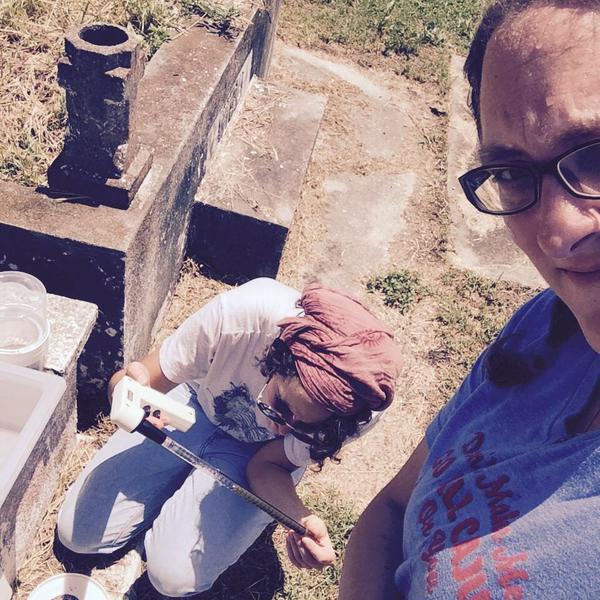Why we need to drop everything and foster female role models in STEM
Female students need accessible female science role-models that they can identify with.
“Female STEM professors not only provide positive role models for women, but they also help to reduce the implicit stereotype that science is masculine in the culture-at-large.” - Young et al. 2013
As of 2009, women only made up 27% of the science and engineering workforce, and 18% of full professors in STEM departments. With so few women in tenured and leadership positions in STEM departments at top research universities, a lack of female role models may act as a “vicious circle” factor in leading women to believe that science and engineering is “for men.” According to research published in 1999, the number of female role models on campus predicts female students’ “commitment to male-dominated professions” such as the natural sciences and engineering.
“Scarcity (of female role models) may help to explain why more women than men switch out of STEM majors in college.” - Young et al. 2013
Could female science role models influence implicit cognitions, or stereotypes, about whether science is more or less suitable for men or women? Researchers at Rutgers recently tried to answer this question by measuring how closely students with male versus female professors identify with science. Danielle Young and colleagues used an Implicit Association Test to measure students’ attitudes toward science and any gendered stereotypes they accept (even on a subconscious level) about science as “masculine” or “feminine.”
The researchers recruited women from engineering and chemistry courses at Rutgers, and had them take implicit attitude tests related to attitudes toward science, personal identification with science, and gendered stereotypes toward science. In these tests, a faster response time in associating words related to men (e.g. male, man, boy, he) with words related to science is indicative of an implicit male science stereotype. On the other hand, female students who identify strongly with science perform faster on tests where they put first-person pronouns (me, myself, etc.) and words associated with science into the same category.
Dr. Christie Wilcox dissecting lionfish FOR SCIENCE. Photo credit: Christie Wilcox. Interact with her on Twitter @NerdyChristie.
Women’s implicit cognitions or stereotypes about science can be quite pernicious, with serious consequences. Implicit stereotypes can even affect women’s math performance on their SAT. Female students have performed worse on math tests after being reminded of their gender or race, showing a causal link between stereotypes and performance in science-related activities.
“Implicit gender stereotypes are routinized cognitions that automatically associate men and women with stereotypic traits, abilities, and roles.” - Young et al. 2013
Young and colleagues found that, as we might expect, male students identify more with science than do female students in STEM courses. Male students performed faster on science stereotype implicit attitude tests, associating male-related words with science-related words. Female students who implicitly stereotyped science as “masculine” also identified less with science in these implicit attitude tests than did male students.
But did the gender of these students’ professors make a difference to their implicit cognitions about science? It did. Female students with a female professor identified more with science than did female students with a male professor.
Scientific diver, Alyssa Adler, measures structural relief, or topography, of a hard-bottom reef populated by sponges, soft coral, and macroalgae. Photo credit: A. Paxton/UNC Institute of Marine Sciences, Flickr.com. Interact with the Institute of Marine Sciences on Twitter @UNCims.
But is it enough to have examples of female scientists in our textbooks and in the media? Or do students need to interact closely enough with female STEM professors to like, admire and identify with them as role models in order to shed their stereotypes about science as “masculine?”
Young's study suggests that seeing one's female professor as a positive role model is instrumental in helping female students identify with science and leave behind stereotypes about science being “for men.”
“Women who viewed their female professor as a role model were likely to associate science more with femininity than masculinity, whereas women who did not identify with their female professor were especially likely to stereotype science as more masculine.” - Young et al. 2013
So examples of successful female scientists who seem distant from us, or whom we don’t identify with, are unlikely to help us cast off pernicious male science stereotypes. Male-dominated STEM environments confirm these stereotypes in our minds - not to mention environments where sexist comments or gender discrimination is swept under the rug. The data is clear. We need more accessible female role models at all levels within and beyond STEM departments. If there could even be more reason than we already have to hire and promote female and minority STEM faculty, and to fill media and social media spaces with female scientist voices, this is it.
“Research suggests that prejudices are best reduced when people have meaningful contact with stereotyped others (Tropp & Pettigrew, 2005; van Dick et al., 2004).” - Young et al. 2013
We might even need to think beyond the obvious, for example by encouraging male STEM faculty and professors to bring in female scientists and guest lecturers in their classes, and providing additional opportunities for female students to interact meaningfully with female graduate students and scientists they can identify with. Could we use social media to foster these interactions?
“Undergraduates and women in nontraditional careers frequently report that female role models have a profound impact on their achievement and aspirations, in part because they represent the possibility of overcoming gender-related barriers to success.” - Young et al. 2013
Here's to female science role models!
Reference: Young, D. M., Rudman, L. A., Buettner, H. M., & McLean, M. C. (2013). The influence of female role models on women’s implicit science cognitions.Psychology of Women Quarterly, 37(3), 283-292. [PDF]













